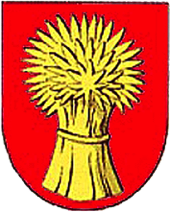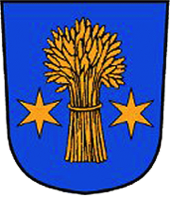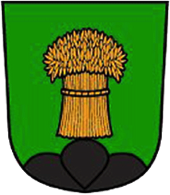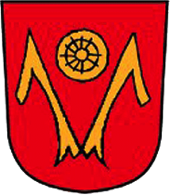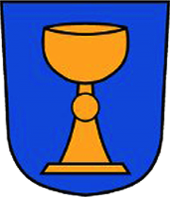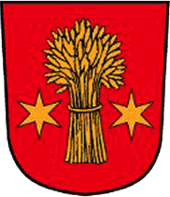1. Origin of the family name
The family name "Zehnder" arised during the middle age from the function as collector of the tenth part of the people's income. The tenth part duty was initially a voluntary contribution in kind from the believers to her church. During the Frankish times the tenth part became an obligation and was owed in four equal parts called "Quarten" to the bishop, the poors, the clerics and for the maintenance of the Churches.
Big landowners, such as the monastery of Tänikon, engaged local farmers with the annual collection of the tenth part from the people. In some cases this function of the collector was reflected in the family name. (Tenths means Zehnder in German)
2. The spellings
The spelling of Zehnder was not standardised and varied by region and by pronunciation. In the area of Tänikon, the name was already spelled in today's form in the baptizing books of Elgg in 1550 and Tänikon in 1659. In other cases the names were spelled Zechendter or Zächender. In Aadorf the speeling of Zender, Zeender or Zehender was rather unusual.
In historical documents of Elgg around 1550 the tenant of the "Bucheren" farm and the tenant of the "Heurüti" farm was called Zächender. With the beginning of the official registration by the civil registry office of Aadorf in 1876, the writing of the names was standardised and officially defined.
3. Places of origin and emigration
On a small parchment document archived in the public record office of the canton of Thurgau, Wälti Zehender is mentioned as the tenant of the "Schletter guot" und Ruedy Zehender is named as the tenant of the "Lindenberg gout".
Zehnder families based in the canton of Thurgau do mainly originate from Ettenhausen. In some cases they do also originate from Guntershausen, Maischhausen or Aadorf. One family tree which was originally based in Basadingen TG became extinct. In Elgg the name of Zehnder or Zächender was mentioned in 1430 for the first time but the name disappeared later again.
In 1996 all communities around Aadorf were politically merged into the community of Aadorf. Consequently all citizens of the merged communities became legal citizens of Aadorf.
In addition to Aadorf, other Swiss Zehnders do originate from Einsiedeln, Menzingen, Birmenstorf and Gränichen. Despite of the same name, there is no family link between the Zehnder of the various regions in Switzerland. The family coats are also different but most of them do have a bundle of ear as a common symbol. Most Swiss Zehnders do originate from areas where large and important monasteries were established during the middle age.
With the industrialisation and the increasing mobility in the 19th and 20th century, Zehnders moved to other places in Switzerland or even emigrated to other countries and continents. This is also the reason why Zehnders are nowadays origins of Zurich, Winterthur, Lucerne, Berne, Basel and other places.
According to the records of Tänikon and Aadorf, some of the Aadorfer Zehnder emigrated in the 19th century to America. Through this website I got contacted by a family based in California and by another family from Chile who's ancestors were coming from Switzerland.
Investigations concluded with the result that it is rather unlikely that the two families do originate from Aadorf. Further investigations have proven, that for example the Zehnders from Einsiedeln were not only more numerous but also more willing to emigrate compared to the Zehnders of Aadorf. In the area of Kentucky there is a considerable Zehnder clan, originating from Einsiedeln.
In Germany Zehnder or Zehender are primarily known in the region of Baden-Würtenberg and in Schwäbisch Gmünd. In Pfahlbrunn for example a Jörg Zehnder was documented in 1507 or a Mathias Zehnder is mentioned in a document of 1554 in Rechberg. Even earlier in 1315 a Friedrich Zehender of Kirchheim is mentioned and three years later a Berthold Zehender of Esslingen is written on a document.
4. Family tree of the Zehnder from Aadorf
Up to the second half of the 16th century, the church of the monastery of Tänikon was not open to the public and used by the convent of the monastery only. At that time all inhabitants of Ettenhausen and Iltishausen belonged to parish church of Elgg and all of them became evangelical during the reformation.
After the restauration of the monastery of Tänikon in 1548 the new abbess started the counter-reformation and opened the church of the monastery for all her believers of Guntershausen, Ettenhausen and Iltishausen. The last baptism in Elgg of a child from Iltishausen was registered in 1587 and the last marriage in Elgg for a couple of Iltishausen was still held in 1645.
In Tänikon, the registration of baptism started in 1659. 4 years later deaths were noted and finally in 1665 they also started to register marriages. The time gap between the books of Elgg and Tänikon unfortunately is too big to biuniquely link the families together. In addition, the use of similar first names over various generations does also not help to identify the numerous families.
The official records of the community of Aadorf started in 1876 only.
From 1981 to 1983 and based on the documents from the former monastery of Tänikon and on the official civil books of Aadorf, Bruno Zehnder-Mathis established and structured the family trees from the Zehnders of Aadorf. The family trees were drawn on big paper sheets with a dimension of 135 x 65 cm. In the interest of a good overview and for the sake of simplicity the family tree does track the members of the male descendants only.
Bruno Zehnder did a great job and was successful to show how the Zehnder families from Aadorf become one big family during the last couple of generations.
The heritage of the Zehnders from Aadorf goes back to the two progenitors called Hans Heinrich Zehnder and Jacob Zehnder. A family relationship between the two is not known and also not confirmed. However, with the marriage of Johannes Bernardus Zehnder (from the tree of Hans Heinrich) and Maria Katharina Carolin Zehnder (from the tree of Jacob Zehnder) the families of the two main trees become related.
In 2004 Philippe Zehnder digitalised the family tree and completed the data with the newest generation. In addition, he collected and added over 300 portrait photos to the tree.
The family tree provides an excellent and simple overview on how the various families in Aadorf are related to each other.
5. Fragmentary family history of the period before 1659
With the beginning of the registration of birth in 1659 and later with the registration of deaths and marriages, it is relatively easy to reconstruct the family relationships of all the Zehnders originating from Aadorf. However, for the period before 1659 there are significantly less documents and reports available, required to establish a solid family tree.
With the foundation of the monastery of Tänikon back in 1249 they also started to keep book about their ownership of land, farms and the names of their tenants. Some of those documents still exist today and are archived in the public record office of the canton of Thurgau in Frauenfeld. Based on those records and with the knowledge of rules, laws and customs of former times, it is possible to track back the families of the tree of Hans Heinrich Zehnder of Iltishausen to a document which was established in 1459.
Former documents of the monastery of Tänikon confirm that Hans Heinrich Zehnder of Iltishausen disposed of vines in Ettenhausen and was let the Oberhof of Iltishausen from Hans Melchior Zehnder in 1662. At that time, the Oberhof was a so called Schupflehe of the monastery of Tänikon. After the counter-reformation during the second half of the 16th century, the monastery only accepted Roman Catholic tenants. Protestant tenants were consequently pushed away and that is also the reason why the tenancy agreement was called "Schupflehe" which means something like the "lease stops by pushing the tenant away".
Families which remained Roman Catholic or which returned back to the Roman Catholic religion had a good chance to keep the farm within the same family as this was usually the case before the protestant Reformation in Switzerland.
Based on another document we know that Andreas Zehnder was the tenant of the Oberhof in 1619. There is a good reason to assume that Andreas Zehnder was the father of Melchior and the grandfather of Hans Heinrich Zehnder of Iltishausen.
More or less at the same time in 1629, Jakob Zehnder may have been the tenant of the Unterhof of Iltishausen and was also mayor of the monastery of Tänikon. The mayor of the monastery was a kind of chief executive officer and responsible for all commercial and contractual matters of the monastery. Although the abbess was the spiritual head of the monastery and nominated the mayor for a specific period of time, the abbess did usually not care about the economic and commercial issues of the monastery.
The family relationship between Andreas Zehnder of the Oberhof and Jakob Zehnder of the Unterhof of Iltishausen cannot be documented. However, there is a great chance and it was not unusual for those times, that the two farms in Iltishausen were allocated within the same family by Jakob Zehnder, mayor of the monastery of Tänikon.
Another document of the monastery mentions that Ueli Zehnder was the tenant of the Unterhof in 1503 and at the same time mayor of Tänikon. In addition it is confirmed that between 1530 and 1651 the Unterhof was a so called "Erblehe", which means that the monastery was committed to let the farm to one of the family's successors. For this reason there is a high probability that Ueli Zehnder of 1503 and Jakob Zehnder of 1629 were related to each other.
In a document, dated 7 June, 1459, Hans Zehnder is one of the first mentioned resident of Iltishausen. Also in 1459 the so called Oberhof of Iltishausen is mentioned for the first time in history. A link between Hans Zehnder and the Oberhof is very likely.
In a debt record dated in 1551 a Jakob Zehnder from Iltishausen is mentioned.
In the books of Elgg several Zehnders from Iltishausen are registered. However, the registrations do not allow to structure the relationships between the various families.
The known circumstances give good reason to assume that the Oberhof in Iltishausen was in the hands of the same family from 1459 to 1662. It is therefore very likely that the first documented Hans Zehnder of 1459 must have been a direct relative to Hans Heinrich Zehnder of Iltishausen.
From this specific family tree, only the so called "Post-line" (founder family of the first post office in Ettenhausen) survived. All other trees extinct. Son and heir of the Zehnders from Iltishausen is Simon Zehnder, son of Anton Zehnder born in 1906.
Erlenbach ZH, October, 2004
Philippe Zehnder, Switzerland
Sources:
- Zehnder Stammbaum bis 1983 von Bruno Zehnder
- Thurgauer Wappenbuch, 1940 von Dr. Jul. Rickenmann
- Berner Wappenbuch 1932
- Ettenhausen, 1999 von Dr. Louis Hürlimann
- Geschichte von Aadorf, von Albert Knoepfli
- Gygerkarte von 1667
- www.chgh.net
- Das ehemalige Frauenkloster Tänikon, Joh. Nater, Aadorf
- Geschichte von Aadorf und Umgebung, Joh. Nater, Aadorf
- Verschiedene Urkunden des Thurgauer Staatsarchivs
- Diverse Stammbaumnachträge und Photos von:
- Klaudia Schmucki-Zehnder
- Josy und Cäcilia Zehnder
- Jürg Zehnder-Christen
- Maria Zehnder-Ruckstuhl
- Martin Zehnder-Schmid
- Patrick Zehnder
- Philipp Zehnder-Jara
- Richard Zehnder-Casutt
- Thomas Zehnder
- Wolfgang Zehnder-Buchner
Future needs heritage
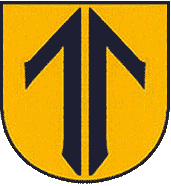
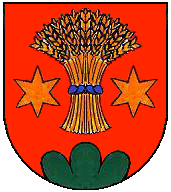
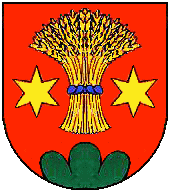
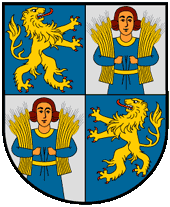
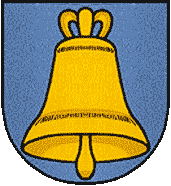
Zehnder von Aadorf (ehemals von Ettenhausen) Thurgauer Wappenbuch, 1940
Zehnder von Aadorf (ehemals von Ettenhausen) Familienwappen auf Zürcher Zünften, von Andreas Hasler 2012
Zehnder von Einsiedeln Schweizer Archiv für Heraldik 1915, Heft 3
Zehnder von Luzern Staatsarchiv Luzern
Zehnder von Interlaken Wappentafel der Burgerschaft von Interlaken, 1933
Zehnder von Zimmerwald Staatsarchiv Bern
Zehnder von Zofingen (ehemals von Kölliken) Zofinger Wappenbuch 1937
Zehnder von Bern Berner Wappenbuch 1932
Zehnder von Bern (ehemals von Zofingen) Berner Wappenbuch 1932
Zehnder von Döttingen Die Bürgergeschlechter der Gemeinde Döttingen mit ihren Wappen, von Hermann J. Welti, 1974
Zehnder von Holziken Holziker Chronik, 1989
Zehnder von Eriswil Emmentaler Geschlechter- und Wappenbuch, Ergänzungsband, von Hans Rudolf Christen, 2008
Zehnder von Wahlern Staatsarchiv Bern

